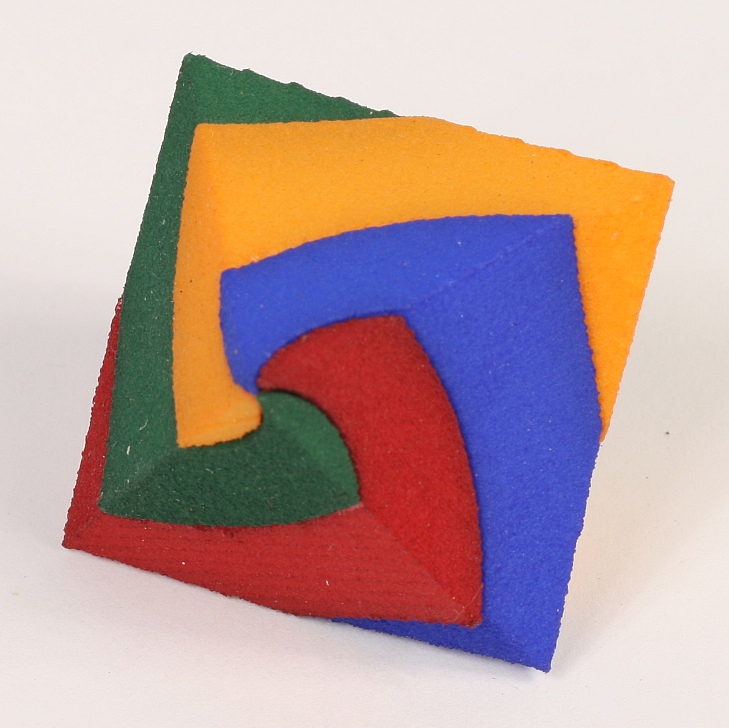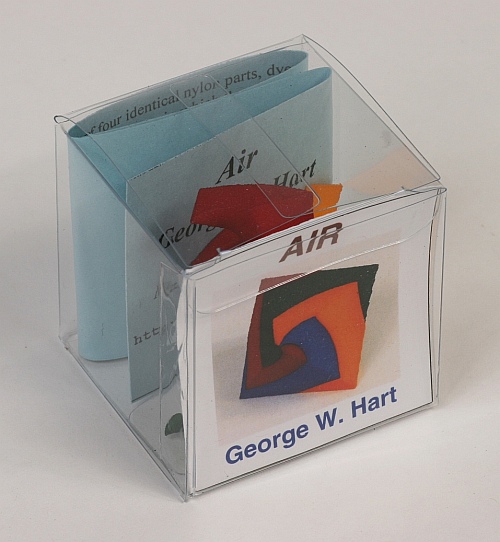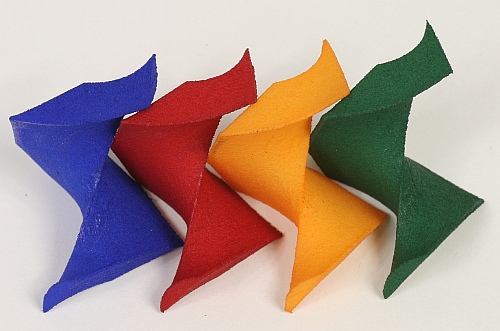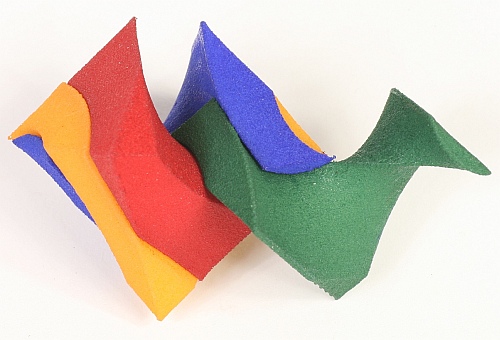




|
Air is a screw-together octahedron made of four identical nylon parts, dyed red, yellow, blue, and green. The name is taken from Plato’s proto-chemical mysticism, in which the octahedron represents the classical element of Air. It is split along four helicoid surfaces whose axes are aligned with a four-fold, long diagonal. I chose the helicoid pitch to make 1.5 revolutions. It is in the series with my earlier Earth, and Fire puzzles. This is one instance within a family of related screw dissections that others have also explored. Martin Gardner credits a related three-piece cube dissection to John E. Morse. [The Magic Numbers of Dr. Matrix, Prometheus Books, 1985, p. 319] William Huff describes related forms used as exercises in an architectural design class. [William Huff, “Trisecting the Cube”] Another three-piece screw-together cube, designed by Robert Reid in the 1980s and recently realized by Oscar van Deventer and George Miller, can be seen at puzzlepalace.com. I came to appreciate the elegance of this family of forms after seeing a two-piece screw-together tetrahedron that Rinus Roelofs designed and brought to the 2005 Bridges Conference [www.bridgesmathart.org]. |